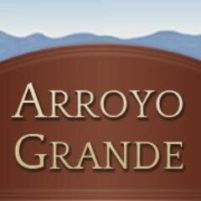State delivering 5% of allocated water, Arroyo Grande wants in
December 14, 2021
 By KAREN VELIE
By KAREN VELIE
After implementing water conservation requirements and fines, the Arroyo Grande City Council recently made plans to deal with ongoing water shortages, which includes purchasing water from other agencies, recycling and buying into the state water program.
Last week, the city ordered residents to reduce their water usage or face fines that increase incrementally from $50 to $200. Depending on past usage, the city is requiring residents to lower their water use from 7% to 14%, with a goal of lowering usage by 10% citywide.
Violators can attend water school in lieu of their first fine.
Currently, the city provides Lopez Lake and groundwater to its residents, which are both in limited supply because of “extreme drought” conditions.
At a meeting several weeks ago, the council voted on plans for short-term and long-term supplemental water sources.
For short-term options, the city council voted unanimously for staff to pursue a temporary agreement to purchase water from Oceano, which cost roughly $1,800 an acre foot during the previous drought. In addition, city officials voted to pursue an agreement to purchase water from Golden State Water Company during shortages, which will require the construction of a 300 foot connection.
As for a long-term reliable water source, the council voted to continue moving forward with Central Coast Blue, a regional recycled water project. At a Phase 1 cost of $2,400 acre foot, and a Phase 2 cost of $1,800 an acre foot, the 225 to 250 acre feet of water the facility is slated to provide would likely end the city’s water shortage issues, according to city staff.
The city council also voted to pursue a ballot measure to permit the city to purchase a long-term supply of state water as a drought buffer even though state water is unreliable during drought years.
California is contracted to deliver about 4 million acre feet of water a year, but generally is able to deliver only about half that and at times only 5% or less of what it is obligated to provide.
The remaining non-existent water is called paper water, expressed in the form of water entitlement certificates. And while these only exist on paper, it’s a high-priced commodity which can be bought and traded on the open market.
In 2021, the State Water Project allocation was initially 10% of entitlements, but because of increasing dry conditions, it was lowered to 5%, according to the California Department of Water Resources. In 2022, the State Water Project is planning zero water delivery allocations.






The comments below represent the opinion of the writer and do not represent the views or policies of CalCoastNews.com. Please address the Policies, events and arguments, not the person. Constructive debate is good; mockery, taunting, and name calling is not. Comment Guidelines